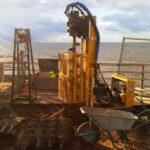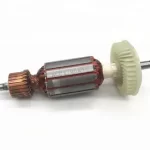Mini piling foundation, also known as micro piling or mini piles, is a type of foundation system used in construction that involves the installation of small-diameter piles into the ground to support structures. Mini piling is typically used when traditional deep foundation methods are not feasible due to space constraints, limited access, or ground conditions.
Advantages of Mini Piling
One of the main advantages of mini-piling foundations is their ability to fit in tight spaces or areas with limited access, making them suitable for urban or constrained construction sites. They are also versatile and can be designed to accommodate different soil conditions and loads. Mini-piling foundations are relatively cost-effective compared to traditional deep foundation methods, and they offer shorter installation times and reduced disruption to the surrounding environment.
Limitations of Mini Piling
Mini piling foundations also have some rules. They may not be suitable for all soil conditions, and site-specific geotechnical investigations are necessary to determine the appropriate design and installation method. Maintenance and monitoring may also be required to ensure the long-term performance of mini piling foundations
Methods Of Mini Piling
Some standard methods of mini-piling include:
Driven Mini Piles
This method uses a pile driver or hydraulic hammer to drive pre-manufactured piles into the ground. Driven mini piles are typically made of steel or concrete and are available in various diameters and lengths. They are driven into the ground until they reach the desired depth and load-bearing stratum.
Augered Mini Piles
This method involves drilling holes into the ground using an auger or similar drilling equipment and then placing reinforcement and grouting or filling the gap with concrete to create a mini pile. Augered mini piles are commonly used in soil conditions where driving piles may not be feasible or environmentally sensitive areas where noise and vibrations need to be minimized.
Screwed Mini Piles
This method involves screwing helical piles into the ground using specialized equipment. Helical piles have helical plates attached to the pile shaft, which provide additional stability and resistance to vertical and horizontal loads. Screwed mini piles are commonly used in areas with soft or loose soils and can be installed quickly with minimal noise and vibrations.
Jacked Mini Piles
This method involves jacking pre-manufactured piles into the ground using hydraulic jacks. Jacked mini piles are typically used in limited access sites or areas with height restrictions, where other methods may not be feasible. They can be installed in various soil conditions for compression and tension loads.

Grouted Mini Piles
This method involves drilling holes into the ground and filling them with grout, a mixture of cement, water, and additives, to create mini piles. Grouted mini piles are commonly used in areas with cohesive soils or when increased bearing capacity is required. They can also be used in environmentally sensitive areas as they produce minimal noise and vibrations.
It’s important to note that selecting the appropriate mini-piling method depends on various factors, including;
- Soil conditions
- Structural loads
- Access constraints
- Project requirements
Consulting with a qualified geotechnical engineer or Mini Piling service in Essex is essential to determine the most suitable method for a specific construction project.
Mini Pile VS Normal Pile Foundation
Mini-pile and normal pile foundations are two different types of foundation systems used in construction, each with advantages and disadvantages.
Mini Pile Foundation
- Mini pile foundation is a type of foundation that uses smaller diameter piles, typically ranging from 100mm to 300mm in diameter, compared to larger piles used in traditional pile foundations.
- Mini piles are typically installed using specialized equipment, such as augers or hydraulic jacks, and are often used in areas with limited access or where environmental restrictions apply.
- Mini piles are commonly made of steel or concrete and transfer structural loads to suitable load-bearing strata in the ground.
- Mini-pile foundations are generally suitable for smaller structures or where soil conditions are challenging, such as in areas with weak or unstable soils or restricted headroom.
Normal Pile Foundation:
- Regular pile foundation, or traditional pile foundation, refers to a type of foundation that uses larger diameter piles, typically ranging from 300mm to 1200mm in diameter.
- Normal piles are typically installed using pile-driving equipment, such as pile drivers or hydraulic hammers. They transfer structural loads to suitable load-bearing strata in the ground.
- Standard pile foundations are commonly made of steel, concrete, or timber and are used for larger structures or where soil conditions are relatively stable.
- Normal pile foundations are widely used in various construction projects, including commercial buildings, high-rise structures, and heavy industrial structures.









